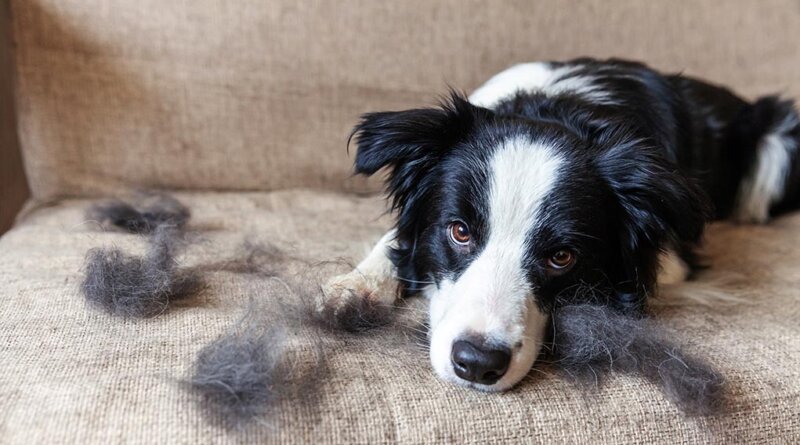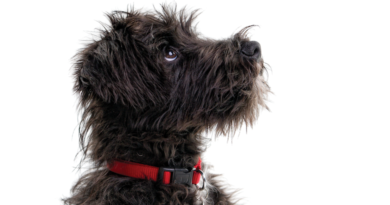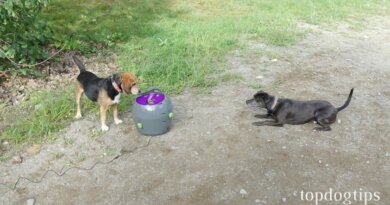How to Deal With Springtime Dog Shedding – Top Dog Tips
Springtime is finally here. Temperature is starting to rise, and the snow is beginning to melt. But this also means it’s spring shedding time.
If Fido’s strands of fur are starting to pile up on your clothes or the floor, it can be a great indicator of the first signs of spring.
If you’re a long-time dog owner, you’d know that your home will be covered in dog hair when it’s spring.
During springtime, nights are becoming shorter, and days are starting to become longer. But those are not the only things that are about to change.
Fido’s thicker winter coat is starting to change to its summer fur.
But why is that? Is there an explanation for why dogs shed more at this time of the year? How can you deal with this shedding madness?
This blog will discuss everything you need about spring shedding in dogs.
Without further ado, let’s discuss why dogs shed more during spring.
Seasonal Shedding: Why Do Dogs Shed More During this Season?
Typically, dogs shed more during the spring and fall seasons. Seasonal shedding happens as an effect of temperature changes. This process is sometimes called the “blowing coat.”
Most dogs are double-coated; a harsh topcoat and a soft undercoat.
The soft undercoat grows faster than the topcoat, and it is shorter. The topcoat is usually what people see and feel on the outside.
During winter, the dog’s undercoat helps them from freezing temperatures. The purpose of their undercoat is to provide insulation for dogs and help them regulate their temperature.
But as the temperature rises, it’s more beneficial for them to lose this extra fur. During springtime, dogs will begin to shed their winter undercoats to help transition to their lighter summer coat.
And when it starts to cool again, the dogs will begin to shed again to make their undercoats grow thicker for the winter.
However, every dog is unique, and not all coat types will be affected by temperature shifts.
For instance, dogs such as Bichons and Shih Tzus sheds less even through season changes because they have thinner undercoats.
On the other hand, dogs like Malamutes and Newfoundlands are heavy shedders since they have thick undercoats.
Year-Round Shedding
There are dog breeds that do not shed coats seasonally. Generally, owners wouldn’t be able to notice this because their dog is shedding little amounts of hair all year round.
These dogs typically grow new hair every month. This means they’ll be requiring frequent clippings to control matting.
Dogs like Poodles and Yorkshire Terriers have continuously growing hair. They have hair shafts with longer life spans and shed small amounts only.
However, dogs such as Labradors and Huskies have a shorter shaft lifespan, making them heavy shedders.
How to Manage Spring Shedding in Dogs
Springtime is finally here, and you know what comes with spring? Shedding. Dogs are now transitioning their winter coat to comfy spring or summer coats.
Since there is no way to stop a dog from shedding, let’s talk about how you will be able to manage and control your dog’s shedding.
Brushing is the key
Similar to exercise and training, grooming is also essential for all dogs. Grooming can not only help clean and freshen up your pup, but it can also reduce health issues.
Regular brushing is key to managing shedding in dogs and can help control matting.
Brushing is essential to dogs, especially heavy shedders. If you don’t brush your pup, excess fur can get trapped in the undercoat, forming knots and mats.
The lack of grooming can also lead to hair lumps that create friction on their skin which can cause infections or hot spots.
Even though every dog is unique, they require frequent brushing to keep their fur healthy and beautiful.
Moreover, brushing can help maintain cleanliness around the house. Also, brushing can be your bonding time with dogs. I promise you that Fido will enjoy the attention.
Choose the right kind of brush
You’ll need to find the right grooming tools to groom your pup effectively. Choosing the right dog brush will help make the grooming experience more enjoyable for both of you.
Using the wrong brush for your dog’s coat type will still keep problems such as shedding and matting.
If you’re struggling to choose the proper brush for your pup, here’s a quick guide to help you out.
Slicker Brush
A slicker brush can be used for short-haired, long-haired, double-coated, hypoallergenic, wire-haired, and curly coats.
It is best for removing mats, dirt, and debris. A slicker brush can also help prevent knots and tangles and can even be used for massaging.
Bristle Brush
A bristle brush can be used for short-haired, long-haired, hypoallergenic, and curly coats. This brush is best for removing dirt and debris on your dog’s coat.
Tick and Flea Brush
As the name suggests, this brush removes ticks, fleas, and their eggs. It can be used for almost all types of dog coats.
It is best advised to use this brush daily, even if you’ve not spotted any ticks or fleas.
This brush can help remove these parasites in their larvae stage or when they are not easily visible to the naked eye.
Pin Brush
The Pin Brush can also be used for almost all types of coats. It is best for daily brushing, removing tiny knots and mats, freeing tangles, and massaging.
De-shedder Brush
Since we’re on the topic of shedding, there’s a specific brush for this. The de-shedder brush is best for reducing shedding and removing old or damaged fur.
During shedding season, it’s best advised to use it daily. If it’s non-shedding seasons, thrice a week is fine.
Double-sided Brush
A double-sided brush can be used for short, long, double-coated, hypoallergenic, wire-haired, and curly coats.
It can be sued for removing mats, dirt, and debris. Also, to prevent knots and tangles.
Nutrition Needs
If you don’t know this by now, your dog’s diet can affect its coat.
If you’re feeding them the wrong type of diet and low-quality foods, their coat will be dull and broken. Also, you’ll see a lot of dead hair and matting.
For their hair to be healthy and beautiful, it will need protein. Also, consider giving them Omega-3 fatty acids (DHA and EPA) to help protect their skin.
These fatty acids, such as fish oils, can help their coat be healthy and shiny by helping moisturize and prevent dry skin.
But that’s not all! They also act as an anti-inflammatory supplement. Omega-3 fatty acids can aid dogs suffering from inflamed skin and joints.
Bathe Frequently
In this day and age, there are now shampoos and conditioners specifically created to help with shedding. It can help the shedding process and improve your dog’s coat health.
Warm baths can help speed up the shedding and dislodge the excess hair on your dog.
However, remember not to excessively bathe your dog as it can lead to skin irritation or a dry and brittle coat.
Vacuum Cleaners and Lint Rollers
There are now vacuum cleaners that are designed for homes with pets. For instance, you can check out the Shark Navigator Professional Dog Hair Vacuum.
This vacuum cleaner has innovative anti-allergen technology that can suck up almost 100% of dirt and allergens.
It is best for dog owners with family members sensitive to dog hair and other allergens.
It’s cheaper than other brands but works superbly and performs similarly.
You can also use a lint roller to help manage your dog’s shedding.
You can try purchasing the Butler Home’s Giant Pet T-Hand Roller for $36.97.
This tool effectively picks up pet hair from your beds, carpets, linens, car seats, sofas, and clothing.
Frequently Asked Questions
How long do dogs shed in the spring?
Shedding will depend on the breed, but it usually takes 2 to 4 weeks each season. Blowing coat is a normal process for healthy and double-coated dogs.
What months do dogs shed the most?
Dogs that shed seasonally usually shed in spring and fall. Their coats will be lighter during springtime due to the upcoming warm weather.
And in the fall, they’ll change their coat to thicker ones to prepare for the cold winter.
Does bathing a dog help with shedding?
Yes. As we’ve discussed above, bathing not only helps our dogs clean but can also help remove excess and dead hair before it falls.
You can also try using de-shedding shampoos to help speed up their shedding process.
Spring Shedding in Dogs: Summary
The cold winter has finally come to an end. Here comes the sun! During spring shedding, dogs tend to lose a significant amount of hair.
And this can be a problem for their owners, especially if they have family members with allergies.
Double-coated dogs usually shed in spring as a result of the changing of the seasons. During the cold winter, dogs grow thicker fur coats to keep them warm.
But their bodies sense the temperature change as the weather begins to warm up in the spring.
Now, they shed their thicker winter coat to regulate their body temperature for the new season.
Fortunately, there are now plenty of ways to manage spring-shedding dogs. One of the best pieces of advice is to brush them regularly.
However, make sure you use the proper brush, or it will all be just for nothing.
You should also feed them high-quality dog food with the correct nutrients to keep their fur healthy and beautiful.
Moreover, you can also purchase vacuum cleaners and lint rollers that are specifically designed for pets.
RELATED: 5 MOST EFFECTIVE WAYS TO REDUCE SHEDDING IN DOGS










